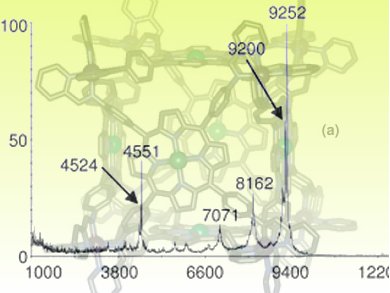Organometallic and coordination compounds have many varied applications, most notably in industrial catalytic processes and in the electronics and healthcare sectors. Their analysis by matrix-assisted laser desorption/ionisation time-of-flight mass spectrometry (MALDI-TOFMS) has been possible for the last 20 years.
Mark Wyatt, EPSRC National Mass Spectrometry Service Centre, UK, tested the idea that MALDI-TOFMS is underused for organometallic complex analysis compared with peptide and other bio-based analyses by performing Web of Science searches. Using the string ‘MALDI AND (metal complex* OR organomet*)’ and ‘MALDI AND (pept* OR prote*)’ for the last 5 years returned 327 and 6161 hits, respectively (accessed 5 April 2011).
He believes this, coupled with most of the articles being published in synthetic inorganic journals, has led to mass spectrometrists not being aware of the applicability of this technique to inorganic chemistry. Articles where MALDI-TOFMS had been used to characterize complexes often had titles of the format ‘Synthesis and characterization of metal element X (oxidation state) and ligand Y complexes’. This specificity, with the generics often only in the keywords, means many articles are missed in a generic search.
Wyatt reviews some recent developments in the field that have made the analysis of air/moisture-sensitive complexes, nanomaterials, and metallodrugs/metallometabolites possible and should lead to MALDI-TOFMS becoming a more common technique in inorganic chemisty.
Image: © Wiley-VCH
- MALDI-TOFMS analysis of coordination and organometallic complexes: a nic(h)e area to work in

Mark F. Wyatt,
J. Mass Spectrom. 2011, 46(7), 712–719.
DOI: 10.1002/jms.1957




